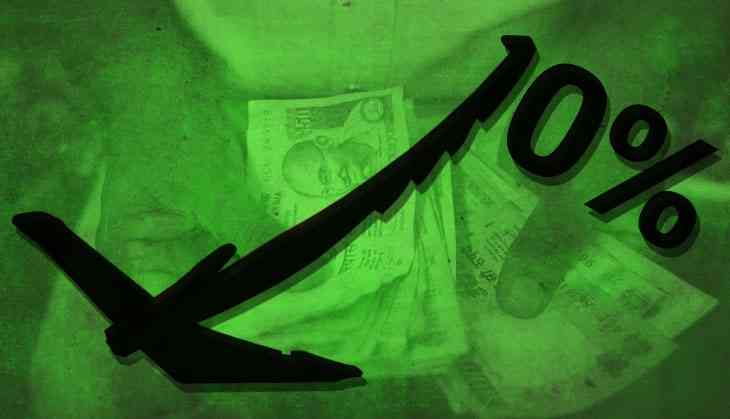Will India ever be able to achieve double digit economic growth?

Talking about the need to grow in double digits is one of the catch phrases of Indian Prime Ministers. Over the last 3 decades, India has been chasing that elusive growth rate but only three times, in this period, did India come close to achieving it.
On Sunday, Prime Minister Narendra Modi, in the governing council meeting of the Niti Aayog reiterated the need to grow in double digits.
But the question is, can India, which is finding it difficult to cross the 8% mark, add two more percentage points to its growth rate?
Between 2003-04 and 2007-08, India constantly touched the growth rate of above 7% and touched an all time high of 9.57% in 2006-07. This was achieved on the back of high global trade growth, which was at 7.6% from 2002-2007. Since the global trade was growing, private sector in India invested heavily taking Gross Fixed Capital Formation (GFCF) as a percentage of GDP from 26.52% in 2003 to 35.57% in 2007.Unfortunately, since then, the GFCF has been constantly declining touching a low of 27.19% in 2016.
Is there a precedence for double digit growth?
India's neighbour, China, grew in double digits for 30 years. Before slowing down to less than 7% in recent times. However, that 30 year growth period was on the back of a robust manufacturing sector that produced merchandise for the rest of the world.
Look at the following data.
Chinese merchandise exports rose from $14 billion in 1979 to $2.3 trillion in 2017. This is equivalent to the size of the Indian economy.
India, on the other hand became a services exporting economy, which neither generates jobs like manufacturing sector nor the wealth that industry brings.
For China, the manufacturing sector accounts for 40% of its total GDP, for India it is just above 18%. Though, through Make in India policy, the present government is aiming to take this share to 25%, but ground reports suggest, despite improvement, India has a long way to cover before expecting a turnaround.
Another downside for India is the constant decline in country's domestic savings.
The ratio of domestic saving to GDP rose from 29.2% in 2003 to a peak of 38.3% in 2007. In 2016, it touched a low of 29%. On the other hand, Chinese government systematically ensured a very high domestic savings rate which went above 50% in 2007 and is still at around 45%.
What needs to be done?
Following the Chinese growth model may not be possible in the Indian context. Both countries have different political systems. But in the past, India has shown that double digit growth is possible within even in a services sector-dominated economy. Moreover, post 2007, there has been a considerable change in the world's trade environment with most countries putting increasing tariffs to control imports from other nations.
In such a scenario, India- as has been said in the past- needs to fuel internal consumption to fuel its economic growth. This model of growth requires more money being pumped in the rural economy, where 70% of India resides.
Since rural economy is largely agriculture based, there is an urgent need for the government to ensure better price-realisation for farmers in India. Despite government's promise of doubling farm incomes within five years (by 2022) the ground reality so far has been its opposite.
While the contribution of agriculture sector is unlikely to grow beyond 18% in the near future, a policy of better price realisation for farmers would contribute in increasing the demand for consumer goods in the rural economy, churning the much needed excess capacity of India's private sector.
Once that happens, the government must ensure that new industries are developed away from the existing centres of economic prosperity in the country. Cities like Bengaluru and Mumbai have already reached a tipping point from where the process of diminishing returns begin to show its effect. The latest Niti Aayog report says, that India's silicon valley- Bengaluru - will run out of water within 2 years. No amount of town-planning now will allow the city to be able to accommodate more people from other parts of the country.
Last but not least, the government must take distribution of wealth seriously. The Oxfam wealth distribution report said that 73% of India's generated wealth in 2017 went to the richest 1% in the country. While 67 crore Indians who comprise the poorest half of the population saw just 1% increase in their wealth. The right-wing economists in the world always argue against focusing on wealth distribution for governments. To them, so long as wealth is being generated, it will eventually trickle down to the last man in the queue. But then that policy can generate only as much wealth as it is doing now. To achieve the additional two percentage point of growth rate, India must ensure better distribution of wealth in the country; without which the double digit growth will remain only elusive.


